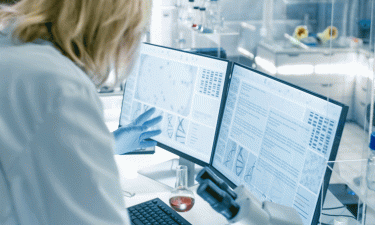Real-world data and its endless potential
Posted: 11 September 2019 | Aiden Flynn (Exploristics) | No comments yet
The possibilities presented by real-world data to improve drug development processes could enhance regulatory and pricing decisions for new therapeutics.


With a changing landscape in the pharma industry, drug developers must find ways to increase efficiency in the drug development process. Real-world data, from beyond clinical trials, can add significant value during the R&D stages of drug development and may hold the key to an efficiency revolution, offering enhanced research that improves regulatory and pricing decisions.
Collection strategies and the approaches needed to unlock the value of real-world data are assessed in this article, as they could play a central role in future clinical development.
Sourcing information
The modern world offers a plethora of sources for data in people’s everyday lives. These range from electronic health records at the GP surgery to smartphone apps and medical insurance claims. Each record offers vital insights into patient populations, disease areas and treatment that can be useful in the drug development process, from its early stages through to post-authorisation.


The benefits of real-world data are clear and vast yet its accessibility is not straightforward. Many drug developers still have a limited view of a treatment’s impact because of the cost, time and capability obstacles in obtaining a wider range of data that would yield greater insights. Clearly, a rethink of current procedures is needed.
Beyond RCTs
There is currently a significant gap between the structured randomised controlled trial (RCT) setting, where data is collected systematically, and the ad-hoc approach to data collection in the everyday medical practice setting. Both environments deliver valuable data on the safety and efficacy of treatments over different time periods and patient groups, yet only the former is clearly standardised and well defined.
Common data standards and analysis methods are likely to gradually become standard practice”
While RCTs provide an invaluable benchmark as a treatment goes through development, testing and validation by regulators regarding the longer-term, post-approval performance of a drug must also be considered. It is therefore vital to find a way to effectively record and utilise data recorded in everyday medical settings.
Phase IV studies
The European Medicines Agency’s (EMA) directive has recognised the importance of post-authorisation information, captured in Phase IV studies, of optimising the safe use of marketed medicines. Developers are therefore obliged to perform Phase IV studies in alignment with the agency’s current scientific advice framework. Although the information collected in clinical studies is commonly monitored post-authorisation at Phase IV, it can be argued that the industry does not yet fully harness real-world data to create a comprehensive clinical picture.
The understanding that data gained post-marketing can impact the utility of medicine and the development of new medicines has resulted in healthcare providers adopting new practices to generate real-world data of better quality. Care providers are developing Learning Healthcare Systems that store and feedback forms of clinical knowledge to inform multiple stakeholders in healthcare development and delivery, including the pharmaceutical industry. These types of networks are critical to the creation of a unified approach to harness post-marketing information and channel largely untapped value to clinical innovators.


Challenges of real-world data analysis
As real-world data gains popularity amongst the regulatory and commercial environment, there are still many delivery issues and disparities in the information recorded, which can make it difficult to retrieve reliable and valuable information.
To be able to extract meaningful insights, data sources must be suitably aligned. The increasing use of electronic data collection (EDC) has the potential to improve the quality of information, but it is necessary for all stakeholders to understand the simple steps to facilitate the analysis of real-world data and influence better healthcare decision making. These include:
- Preparation and cleaning of data – removing any potential bias, using statistical modelling approaches to handle variability in the data. Without quality control measures, there is a risk of false conclusions and misinterpretations.
- Understanding gaps in data – analysing real-world data to identify any missing evidence in existing data, such as insertion of synthetic data, which can impact the interpretability of the information.
As the drive towards real-world data accelerates, best-practice approaches are emerging, supported by regulatory bodies, and slowly but surely a consensus is being reached. Common data standards and analysis methods are likely to gradually become standard practice and enable the area of real-world data to free itself from its most common obstacles.
Conclusion


To better understand new drug products and the diseases and populations they target, a bigger-picture approach is required. Real-world data forms a vital part of this and as more industry stakeholders recognise its importance and come on board, it is becoming clear that there is no limit to its potential.
About the author
Aiden Flynn is the founder of Exploristics and has more than 20 years’ experience in drug discovery and clinical development. After seven years as a lecturer at University College, London, he spent ten years at GlaxoSmithKline as a director of statistical support for biomarker studies across research and development. After founding Exploristics in 2009, he has aided pharmaceutical companies as well as many biotechnology, device and diagnostic companies.
Related topics
Analytical techniques, Big Data, Clinical Development, Clinical Trials, QA/QC, Research & Development (R&D)









